Nacionalni Stadion
| Capacity | 52 241 |
|---|---|
| Country | Serbia |
| City | Surčin |
| Clubs | – |
| Category | Design being implemented |
| Cost | RSD 112.4 B ($1 B) |
| Construction | 2024–2026 |
| Design | Fenwick Iribarren Architects |
| Contractor | Power Construction Corporation of China |
Advertisement
Nacionalni Stadion – design description
What is the design of the National Stadium of Serbia in a nutshell?
The construction of the National Stadium of Serbia was discussed for more than a decade before construction began in 2024. The facility follows the trend of large and modern national stadiums that have been built recently in Central and Eastern Europe, and is expected to feature an original façade with terraces full of greenery.
The facility will accommodate more than 52,000 spectators and will become the new home of the Serbian national football team. The stadium, which will cost close to a billion euros, is being financed by the Serbian government and is being built by a Chinese company. The facility is expected to be ready by the end of 2026.
The stadium will be built in Surčin, a western suburb of Belgrade, at the junction of the A1 and A2 highways, from where it will be close to Nikola Tesla Airport. Along with the stadium, a complex of buildings for the Expo 2027 exhibition to be held in Belgrade is also being built, and a railway will be brought to the facilities.
How did the plans to build the National Stadium of Serbia come about?
Why does Serbia need a new national stadium?
To date, the largest and most important stadium in Serbia, where the national team often plays, is the FK Crvena zvezda facility in Belgrade, the Rajko Mitić Stadium (the so-called Marakana). The stadium can accommodate more than 50,000 spectators, but it is no longer among the most modern, and due to the presence of an athletics track, the stands are far from the pitch.
At the beginning of the 21st century, large and modern national stadiums were built in Poland (the National Stadium in Warsaw) or in neighboring Romania (Arena Națională in Bucharest), and similar plans began to be drawn in Hungary as well (which later resulted in the construction of the Puskás Aréna in Budapest).
The lack of a modern football stadium with ever-increasing infrastructural requirements and examples from nearby countries also caused Serbia, which has great football traditions and ambitions, to start thinking about building a 21st century facility.
The impetus for the first concrete steps towards this objective was the intention to co-host Euro 2020, which was to be held in a number of countries across Europe.
When were the first plans to build the National Stadium of Serbia conceived?
The first concrete plans for the construction of the National Stadium of Serbia emerged in early 2013. At that time, the Serbian Football Federation (Fudbalski savez Srbije, FSS) reached an agreement with the British company Mace, with which it was intended to cooperate on the project. The new stadium was to allow the country to apply to host Euro 2020 matches.
In March 2014, FSS President Tomislav Karadžić announced that the new stadium would not be built. Instead, a modernization of either the venue of Crvena zvezda or Partizan Stadium was promised, but giving up on building a national stadium also meant giving up on applying to co-host Euro 2020 (the application deadline was April 2014).
How did Serbia's intentions to build a national stadium come to pass?
In October 2015, the topic of building a national stadium came to life again, after then Prime Minister Aleksandar Vučić announced that the government would allocate €150 million for its construction. At the time, it was initially assumed that around €250 million would be needed for the investment, and that the project would be carried out through a public-private partnership.
Initially, it was still undecided whether it would be the construction of a new stadium or the reconstruction of the facility of either of Serbia's two biggest clubs (Crvena zvezda and Partizan), but the option of building a completely new facility soon prevailed. Among the locations considered, the western districts or suburbs of Belgrade, from where it is close to Nikola Tesla Airport, emerged most often.
In 2018, it was decided that the new national stadium would be built in the suburb of Surčin, a dozen kilometers west of Belgrade's center, next to a new highway interchange (A1 and A2), relatively close to the international airport.
Politicians have since begun announcing the imminent realization of the new national stadium, and the topic has become popular in the Serbian media. An ardent supporter and promoter of the stadium's construction was Aleksandar Vučić, Serbia's prime minister from 2014 to 2017 and the country's president since 2017.
The project did not move ahead as quickly as announced, and there was also the COVID-19 pandemic along the way. Nevertheless, it was slowly moving forward. In 2019, the authorities set up a working team, and in August 2020, the Ministry of Finance presented renderings of the new stadium. The well-known Spanish studio Fenwick Iribarren Architects was behind the concept, and later in July 2023, a contract was signed with them for the design documentation.
Is the National Stadium the only stadium investment being made by the Serbian government?
Under the leadership of Aleksandar Vučić, the Serbian government has launched a program to support the development of sports infrastructure. Before construction of the national stadium began, the government financed the construction of three other modern, albeit much smaller, football stadiums in Loznica, Leskovac and Zaječar (all opened in 2023). There are also plans to build or modernize several more facilities.
However, the national stadium project is the most important one the government is undertaking, incomparable in scale and cost to other investments in sports facilities.
What does the Expo 2027 exhibition have to do with Serbia's National Stadium?
As Belgrade was planning to apply to host Expo 2027, plans began to chalk out plans to build facilities for the world exhibition. It was assumed that the new exhibition complex would be built right next to the planned national stadium. A study with a preliminary concept of the complex was created in June 2022.
On June 21, 2023, the hosting of Expo 2027 was awarded exactly to Belgrade, which meant that ambitious plans to build an exhibition complex next to the stadium would be implemented.
Shortly thereafter, it was also announced that an additional 18-kilometer stretch of railway line would be built to provide rail access to Belgrade airport, as well as to the new national stadium and Expo 2027 facilities.
How is the construction of Serbia's National Stadium progressing?
An account of the construction of the National Stadium of Serbia can be seen on a separate subpage
In the summer of 2023, shortly after Belgrade was awarded the hosting of Expo 2027, preliminary work began to prepare the site and infrastructure for the construction of the Expo buildings and the national stadium. The first proper construction work on the site did not begin until February 2024 with piling for the construction of the first of the halls of the exhibition complex.
When did the construction of Serbia's National Stadium begin?
The groundbreaking ceremony for the construction of the National Stadium of Serbia took place on Labor Day, May 1, 2024. The ceremony was attended by Serbian President Aleksandar Vučić, Finance Minister Siniša Mali, FSS President Dragan Džajić, President of the Republic of Serbia Milorad Dodik, Chinese Ambassador Li Ming and many other high-level officials.
When will Serbia's National Stadium be built?
The main contractor for the work is the Power Construction Corporation of China (PowerChina). According to the schedule, construction should be completed in December 2026.
How much will it cost to build the National Stadium of Serbia?
Initially, the construction of the national stadium was expected to cost around €250 million. When construction work began, the cost was already much higher at 112.4 billion Serbian dinars (€960 million).
What obstacles does the construction of Serbia's National Stadium face?
The construction of the stadium has its critics, largely due to the very high cost. Objections are also related to whether it will be possible to fill the stands of the future facility on a regular basis and ensure its profitability. In addition, after work began, doubts were raised about the ownership of the land on which the stadium and Expo facilities are to stand.
What will the National Stadium of Serbia be like?
The stadium will be built on a circular plan, and the building will have a diameter of 292 meters and a height of 54 meters. The stands will be divided into two tiers along with a narrow balcony between them, and their upper edge will be heavily corrugated. The auditorium will be covered by a flat white membrane roof. The venue's capacity will be 52,241 spectators.
The façade will be an openwork steel structure with three terraces. Shrubs and trees will be provided on each of them, making the facility a “stadium-garden”. In addition, the stadium will feature a rather generous use of wood as a secondary structural element. From the outside, the facility will be surrounded by parking lots.
The green gardens and wooden elements in the facade rightly evoke associations with the Tokyo Olympic Stadium, while by its circular shape the facility may bring to mind Brazil's National Stadium. Despite some similarities with other venues, however, the new stadium on the outskirts of Belgrade will look quite unique and original.
Where will the National Stadium of Serbia be built?
The stadium will be built in the suburb of Surčin, several kilometers west of the center of Belgrade. The facility will be built in an undeveloped land, near the junction of the A1 (Belgrade's highway bypass) and A2 (Miloš Veliki highway) roads, relatively close to Serbia's largest airport, the Nikola Tesla Airport.
Along with the stadium, the Expo 2027 exhibition buildings will also be built on the site, along with 1,500 apartments. A railway line will be brought to the stadium and the Expo facilities.
How will the National Stadium of Serbia be used?
The stadium is to become the country's main, most prestigious football arena. The facility is expected to regularly host matches of the Serbian national team. Although it will most likely not have a permanent host, it is quite possible that it will occasionally be used by local clubs, for example in European competitions or during the famous derby between Crvena zvezda and Partizan, or when one of the club's stadiums is being rebuilt.
With a stadium of this class, Serbia will be able to apply to host major international events. Aleksandar Vučić has already announced that the stadium will host the 2028 Europa League final, and it is possible that the Serbian Cup finals will also be played there. In addition, the facility will host a variety of cultural events and activities, including concerts.
Top Future Serbian Stadiums
Advertisement
Renderings

2024 © Fenwick Iribarren Architects 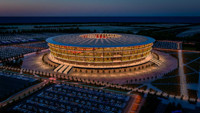
2024 © Fenwick Iribarren Architects 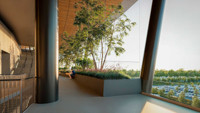
2024 © Fenwick Iribarren Architects 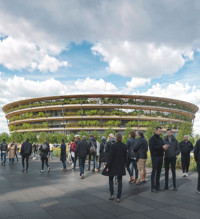
2024 © Fenwick Iribarren Architects 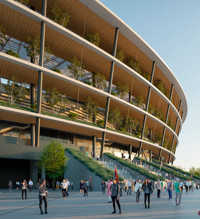
2024 © Fenwick Iribarren Architects 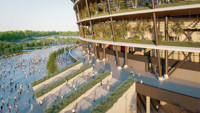
2024 © Fenwick Iribarren Architects 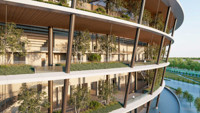
2024 © Fenwick Iribarren Architects 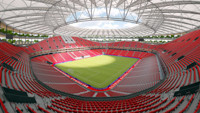
2024 © Fenwick Iribarren Architects 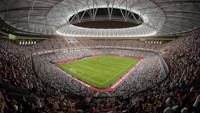
2024 © Fenwick Iribarren Architects 
2020 © Ministarstvo Finansija 
2020 © Ministarstvo Finansija 
2020 © Ministarstvo Finansija 
2020 © Ministarstvo Finansija 
2020 © Ministarstvo Finansija 
2020 © Ministarstvo Finansija 
2020 © Ministarstvo Finansija 
2020 © Ministarstvo Finansija 
2020 © Ministarstvo Finansija 
2020 © Ministarstvo Finansija 
2020 © Ministarstvo Finansija
2020:
Related news
2025
-
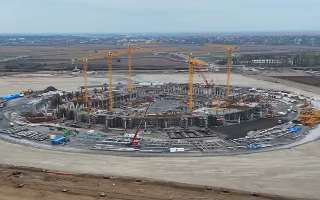
Serbia: Serbia’s national stadium plan hit by rising costs and delays
According to the Fiscal Council, the cost of Nacionalni Stadion in Belgrade has already reached €368 million, and delays will consume millions more. Is Serbia heading toward one of the biggest investment failures of recent years?
-
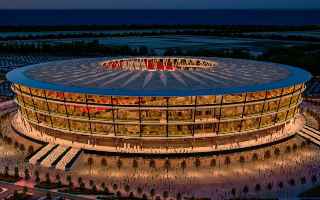
Serbia: After months of rejections, approval granted for national stadium in Belgrade
Construction of National Stadium in Serbia’s Surčin has become one of the most debated investment projects in recent years. Repeated building permit applications, rising costs, and political promises have turned the venture into a source of numerous controversies.
-
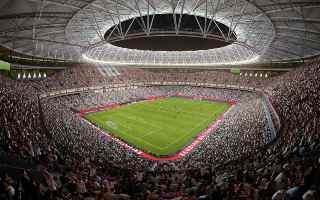
Serbia: National Stadium moves forward despite lacking building permit
The Serbian Ministry of Finance has received a rejection regarding the building permit for the National Stadium project. The submitted application was deemed incomplete. According to the documents, the planned venue would feature a basement, a ground floor and seven levels above, with a height of 51.5 meters. The application also covered auxiliary infrastructure and parking facilities.
-
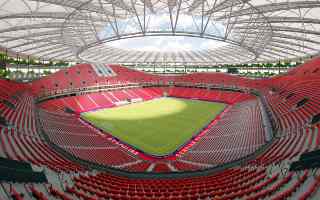
Serbia: Serbian national stadium project in the shadow of crisis and resignation
The sudden resignation of the director of the most important public project in Serbia — EXPO 2027 — points to serious problems or misunderstandings among decision-makers. What happened that made Dušan Borovčanin, the former head of EXPO, decide to leave this key undertaking?
-
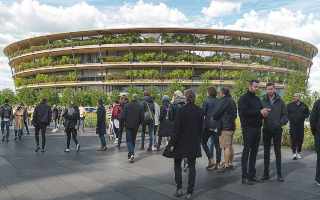
Serbia: €1 billion National Stadium in Serbia rises despite lacking permits
Serbia is building a monumental National Stadium in Surčin, even though… formally it has no right to do so. Work is in full swing — cranes and workers are on site — but the lack of key permits and a skyrocketing budget raise serious questions.
-
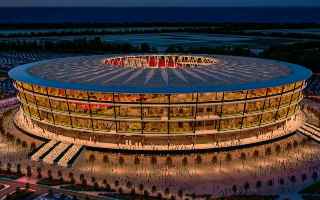
Serbia: Legal doubts over Serbia’s National Stadium construction
The latest phase of the National Football Stadium project in Belgrade, which also includes facilities for the international Expo 2027, foresees further expansion of the construction area in the Surčin and New Belgrade districts. Is this legally compliant?
-
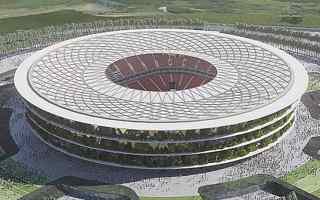
Serbia: New national stadium could pay for itself in… 400 years
Serbia is continuing with one of the most controversial investments of recent years. While the authorities are working intensively on the fourth phase of the development plan, experts warn that the stadium may only pay for itself in hundreds of years.
2024
-
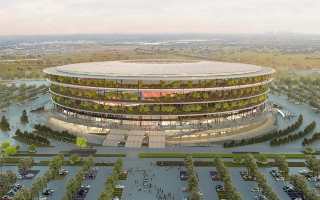
Serbia: Controversy surrounding national stadium in Belgrade
On May 1st, the cornerstone for the new national stadium was laid in Surčin, located 15 km from Belgrade. The President of Serbia has promised that the stadium will be one of the most modern in Europe and will be a "true masterpiece".
-
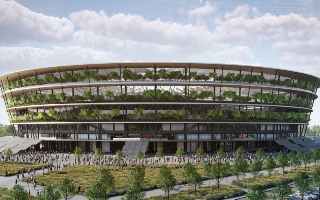
Serbia: Controversy surrounding contract for National Stadium in Belgrad
There is no shortage of controversy surrounding construction in the western part of Belgrade. This time, the state has signed a contract with an investor linked to friendly politicians. A loan has been approved and the stadium itself is causing divisive public opinion. Meanwhile, the first effects of the work can already be seen on the construction site.
-
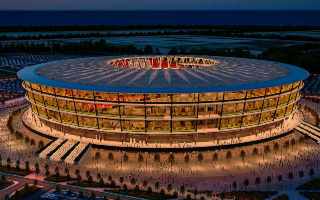
Serbia: Controversy with national stadium under construction
On Mat 1, 2024, the foundation stone laying ceremony for the new national stadium took place in Surčin, even though the feasibility study for the project has still not been completed. This situation raises a lot of controversy and criticism, especially in the context of investment logic.
-

Serbia: Construction begins on unique national stadium
In May, the foundation stone was laid for the construction of the new national stadium in Surčin, located 15 km from Belgrade. The President of Serbia promises that this facility will be one of the most modern in Europe and will be a "true masterpiece". What will the new arena for the Serbian national team look like exactly?
2023
2021
-

Serbia: What is the future of National Stadium?
Football in Serbia is experiencing its best time in many years. The national team advanced to next year's World Cup and the domestic league is currently in 12th position in the UEFA ranking. So it seems that now is the best time to start the construction of National Stadium.
-

New designs: Seven new stadiums from Serbia
Serbia is another country in Europe where the stadium boom is in full swing. Today we present the designs of seven new venues. Almost half of them are already under construction and the rest are awaiting implementation.
-

New design: “Serbian Wembley”, Vučić's grand vision
When a president announces during the pandemic that a national stadium is urgently needed, it's bound to cause a stir. But despite opposition the €250-million giant outside Belgrade will be built. Or... it won't.

 StadiumDB
StadiumDB